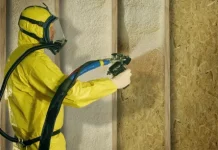Pre-production is a crucial stage in the video production process. Without drafting out plans for the video project, your production can run for a more extended period, go beyond the budget, or miss even miss some necessary footage.
Pre-production determines the path and efficiency of video production through planning key aspects, including budgeting, storyboarding, and location scouting.
Therefore, it’s crucial for you, either as a video marketer, filmmaker, or content creator, to understand these processes to run a successful video film production. This article will teach you about pre-production, including steps to guide you during this stage.
Table of Contents
What is a Pre-Production Stage?
Pre-production is planning and executing every activity you should do before the technical video production begins. It’s the early stage of any video project, whether commercials, short films, movies, or music videos. This phase defines the production stage’s efficiency, organization, and success.
The pre-production phase has many moving parts, and the more work you put into this stage will help your production go smoothly. You can use production management software to help you keep everything organized and central.
Steps Involved in Pre-Production
The chronological order of these steps is static because producers may order the steps differently according to their experience or availability. However, these are the basic steps involved in the pre-production process:
1. Make a Production Budget
Draft a production budget containing how much money you will spend on the video production. It’s important to plan for a bit of flexibility, as video productions often have some roadblocks along the way.
2. Write and Break Down the Video Script
Before you begin filming, you need to detail the script for the video. The scripts are critical because they direct the scenes of the video.
After you’ve written the script, you need to pick out the location, props, costumes, talent, extras, visual effects, and sound effects from the script. This list will get you prepared for everything needed for shooting and post-production.
3. Build a Production Schedule
Once your budget and script are in place, you can hire a line producer to assist you in preparing a preliminary schedule. Your filming schedule mainly determines this schedule, so you must check your video script to know how many scenes can be shot a day.
4. Hire a Team
After creating a budget and production schedule, the next step is assembling a crew. This will likely depend on your budget, but here’s a list of what your team should include:
- Cinematographer
- Costume designer
- Casting director
- Director of photography
- Makeup artist
- Gaffer
- Art director
- Production designer
- Production Coordinator
- Editor
Delegating the production task to these crew members reduces your workload. You can give your directors some authority to make certain decisions and ensure your production manager has access to the production funds.
5. Map Out a Creative Plan
Once your team is in place, it’s time to map out a creative plan that will fulfill the goals or vision of your video. The director and department leaders will need to meet regularly to discuss with the line producer on necessities and, if needed, modify the budget to meet these changes.
6. Create a Storyboard
Storyboarding is the visual plan of each scene; it involves you and your creative team, director, and department heads. It helps to visualize your video before you begin filming to help reduce mistakes and stay in line with your budget.
7. Create a Shot list
With the many scenes in your video script, it can be easy to get lost during filming. A shot list will help you keep track of your project.
8. Secure the Gear, Locations, and Talent
You will need a lot of equipment and elements to create your masterpiece. This task is assigned to your line producer, production manager, and department heads. It also involves location scouting by your location manager. In this step, you’ll also want to ensure your talent is secured for the project.
9. Send out Call Sheets
A call sheet is a document that contains all the information necessary for the video shoot. It’s an important document that must be well-written and detailed to succeed in video production. The call sheet tells your crew and talent when they are supposed to be on set and the shooting schedule for each day.
Conclusion
Refrain from worrying about how long the steps of making a video are; with the right team, it can be a smooth and efficient process.
With this article, your cost of production and wasted time will be reduced drastically because of how organized your pre-production stage will be. So, follow this pattern, and with time, hard work, and practice, you will get great at making a better video.








